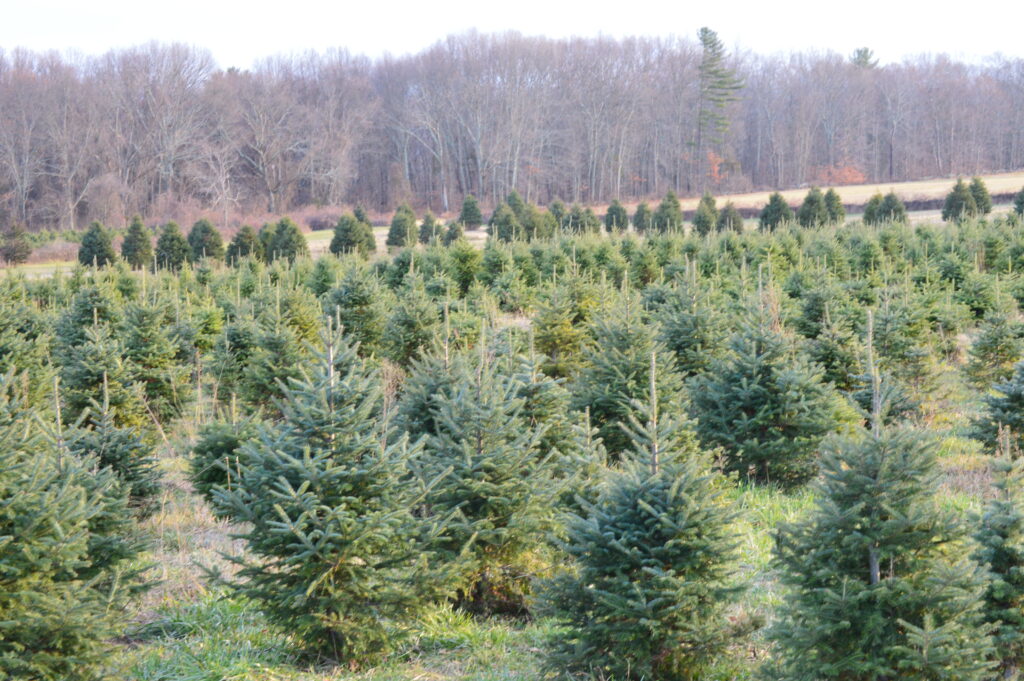
Christmas seems to arrive earlier each year. Store displays of yuletide decorations go up as soon as Halloween is over or sometimes even sooner.
While these Christmas displays may seem premature, this year they offer a helpful reminder to make plans to visit a CT Grown Christmas tree farm. Many farms have opened earlier than usual in anticipation of another year of strong demand for real Christmas trees.
The COVID-19 pandemic drove a spike of visitors to Christmas tree farms in 2020 and 2021, as people were more determined to create an enjoyable holiday experience at their home. Christmas tree farmers never could have anticipated this surge in demand, since growing a Christmas tree is a lengthy process; it takes five to 10 years for a seedling to reach maturity.
Farmers have to be cautious about how many Christmas trees are cut, since cutting too many immature trees in one season can have a ripple effect for years to come. Last year, some farms took steps such as shutting down early or restricting their cut-your-own options in order to prevent overharvesting. CT Grown farms expect a stronger inventory this year, but those who visit early will have more to choose from.
“We have plenty of beautiful trees and with more than 400 tree farms located throughout Connecticut, consumers will be able to find the perfect tree – folks should check the website or call ahead to check on availability,” said Commissioner Bryan P. Hurlburt of the Connecticut Department of Agriculture. “We encourage people to learn more about the varieties available, pick up a wreath, poinsettia, or other seasonal product to help decorate your home, and enjoy the special holiday celebrations going on at CT Grown Christmas tree farms.”
Can I pick out a tree now and cut it later?
Buying a Christmas tree requires careful timing; some farms allow tagging to choose a tree early and cut it later. Tagging enables you to visit the farm, select your tree, and place a tag on it. This tag lets farm staff and other visitors know that the tree has been reserved and should not be harvested.
Check with the farm ahead of time to see if they allow tagging, since some farms only allow same-day harvesting.
What you’ll find at a CT Grown Christmas tree farm
Cut-your-own farms invite you to stroll through the stands of trees and find the perfect specimen for your home. They usually provide you with a saw to fell the tree and sleds or carts to tote it out of the fields for purchase. Farms also have special equipment to shake off loose needles and wrap up the tree, and staffers are often willing to help you secure the tree to your vehicle.
Farms may also sell a variety of other seasonal items, such as wreaths and poinsettias, as well as tree accessories like stands, garlands, and even commemorative ornaments.
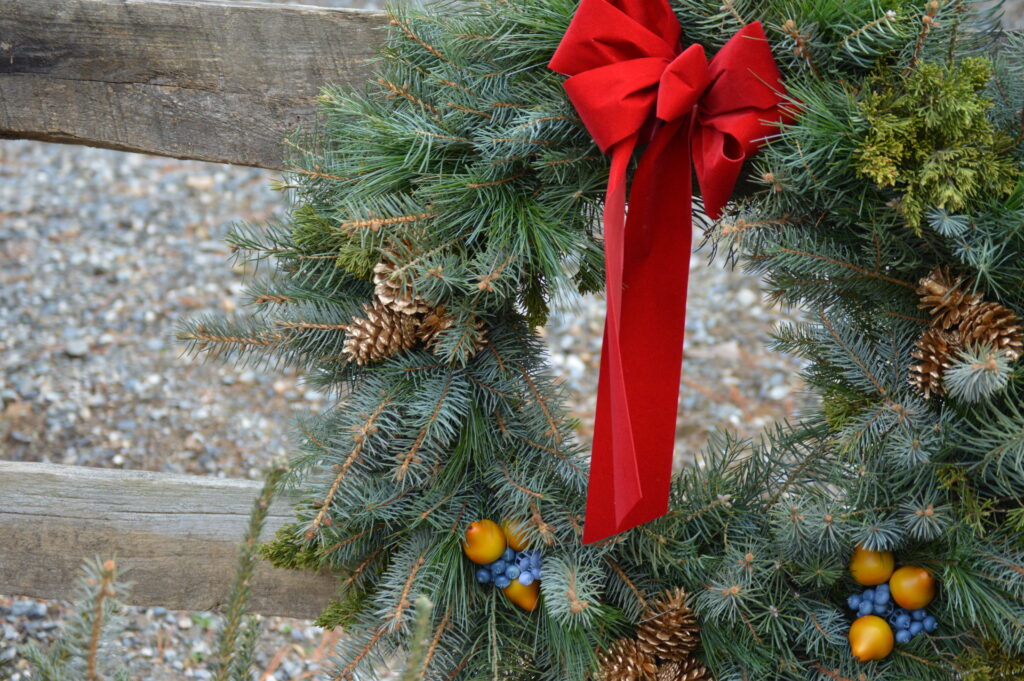

Christmas tree farms don’t just want to sell you a product; they work to create a memorable and enjoyable experience your family will want to revisit year after year. On any given weekend, you might discover that the farm is offering hay rides, hosting food trucks, providing family photo sessions, serving seasonal refreshments like hot cocoa and sugar cookies, or bringing in Santa Claus for a visit.
CT Grown Christmas tree varieties
There are several varieties of Christmas tree that grow in Connecticut. This guide can help you decide which type will best suit your needs:
- Balsam Fir: A dark green tree with long-lasting needles and a distinct fragrance
- Blue Spruce: Distinguished by sharp needles, which necessitate careful handling but can be useful if you need to keep pets at bay; has strong branches and good needle retention, but is not very aromatic
- Canaan Fir: Has similar characteristics to balsam and Fraser firs, with good needle retention
- Concolor Fir: Known for its longer needles, good needle retention, and strong scent
- Douglas Fir: One of most popular Christmas tree options, with a dark green hue, dense branches, soft needles, and a lovely fragrance; its branches are less robust than other options, making them better suited for light ornaments
- Fraser Fir: Features a blue-green appearance, strong branches, good needle retention, and a pleasant aroma
- Norway Spruce: Dark green and well-shaped, but with poorer needle retention
- White Pine: A good choice for those in need of a taller tree, with soft needles and good needle retention; drawbacks include minimal scent and weaker branches
- White Spruce: Well-shaped with a bluish green color; needle retention isn’t as strong, but is better than other spruce options
Tips for tree selection and care
Before you head to a CT Grown Christmas tree farm, measure the height of the room where you’ll place the tree and the width of the doors you’ll use to get the tree inside. Bring along a measuring tape to make sure the tree you pick won’t be too large.
Contrary to what Clark Griswold says, you don’t have to be frozen from the waist down as part of the experience. Dress in warm, comfortable clothes that you’re willing to get dirty, and wear sturdy footwear. Check ahead to see if you need to bring your own saw, and it’s a good idea to bring your own rope or tie-downs to secure the tree for the trip home.
Look for a healthy tree that doesn’t have too many brown or shedding needles. Don’t discount a tree just because it has a flaw or two, such as an area with thinner branches. If you’ll be placing the tree against a wall or in a corner, you can easily conceal a portion of the tree that is less visually appealing.
Once home, be sure to water your tree regularly to prevent the tree from drying out, which will cause the needles to shed faster and create a potential fire risk. Never let the water line drop below the bottom of the trunk, since doing so will allow resin to seal off further water uptake. Check the water level each day, or get an automatic tree waterer to assist with this task.
What should I do with the tree after the holiday?
Many towns and cities schedule a day or two for curbside pickup of Christmas trees, or designate a site where trees can be picked up. These trees are then used for compost, mulch, or sand dune stabilization projects to benefit local parks and beaches.
You can also place your tree in the yard as a sanctuary for birds. Decorate it again with simple bird feeders made from pine cones, peanut butter, and birdseed to attract more feathered friends to your home.
Christmas trees are also sought after by farms. Goats, alpacas, chickens, and other animals enjoy browsing through the branches as an appetizer or enrichment activity as they seek other treats hidden between the boughs.
Check in with your local farm to see if they are accepting trees following the holiday. Just be sure to remove all ornaments and decorations, and don’t ever give them to animals without permission.
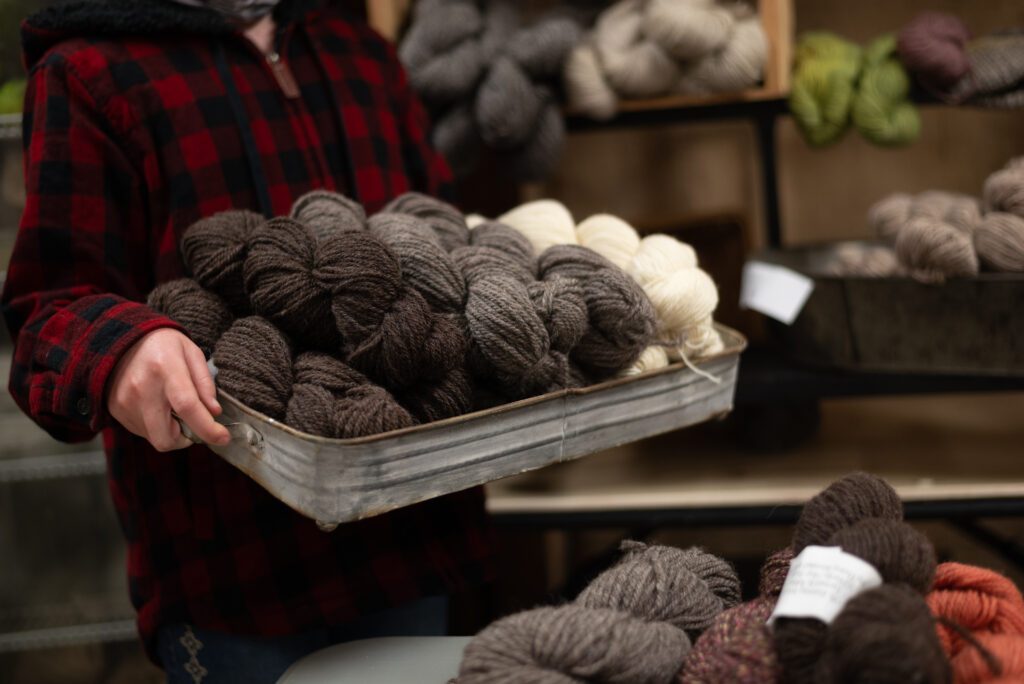
Winter is coming in Connecticut. While some CT Grown farmers are continuing their growing seasons and attending winter farmers’ markets, others have closed their farm stands until next year and are focusing on other essential work like ordering seeds and maintaining machinery.
But your support for CT Grown products doesn’t have to stop at what’s in the refrigerator. The CT Grown product extends to all farm products originating in Connecticut, including several options that can help keep you warm and cozy on a dark and chilly evening.
Fiber
Remember when your father told you to leave the thermostat alone and put a sweater on if you were cold? Well, why not join the growing number of knitters and turn to CT Grown producers for your next hat, blanket, or new pair of mittens or socks?
Many animals have natural fibers—such as hair or fur—which can be used to manufacture products. Wool is perhaps the best-known example, with more than 400 farms in Connecticut caring for a flock of over 6,000 sheep and lambs. Other animals raised in Connecticut for their fiber include alpacas, llamas, and Angora goats.
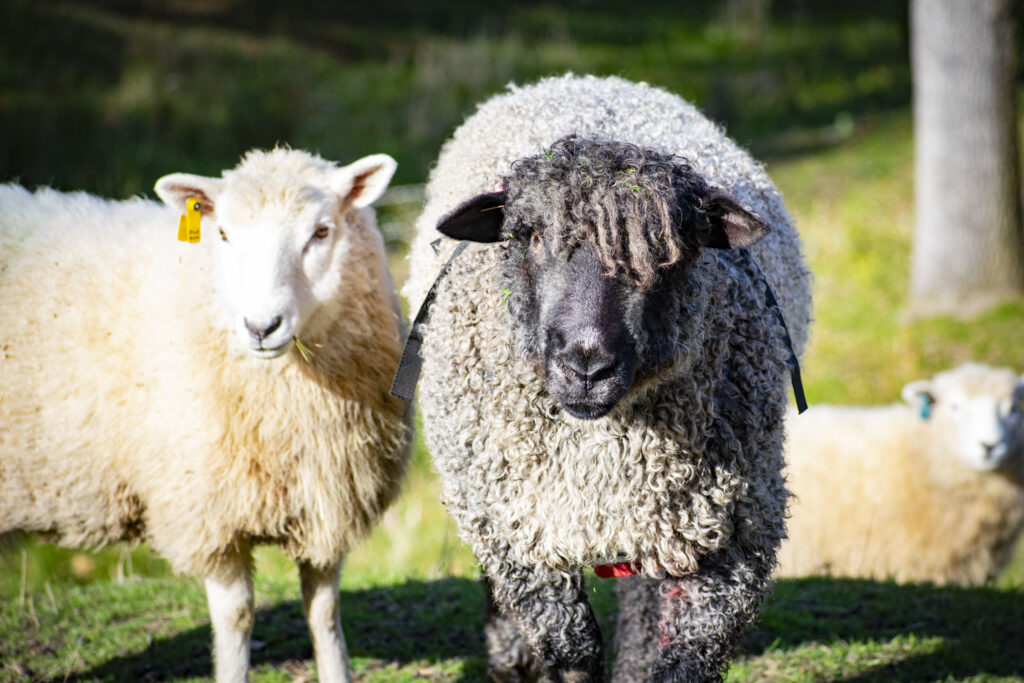
Collecting the fiber is just the first step toward a finished product. It must then be converted to yarn through a process of cleaning, carding, spinning, and dying.
Don’t have the time to make a new winter wardrobe? Stop by a fiber producer to see what they have in their farm store. Many go the extra mile by providing completed products like blankets, hats, scarves, sweaters, and mittens.
Forest products
Relaxing in front of a roaring fire is one of those quintessential New England experiences, but it’s become less common as homeowners rely more on fuels like heating oil and natural gas to stay warm. Yet many properties in our region continue to employ wood as a secondary heating source — especially when fuel costs go up. Firewood and wood pellets are among the items that are produced locally, so you can make your home more inviting using a local fuel source.
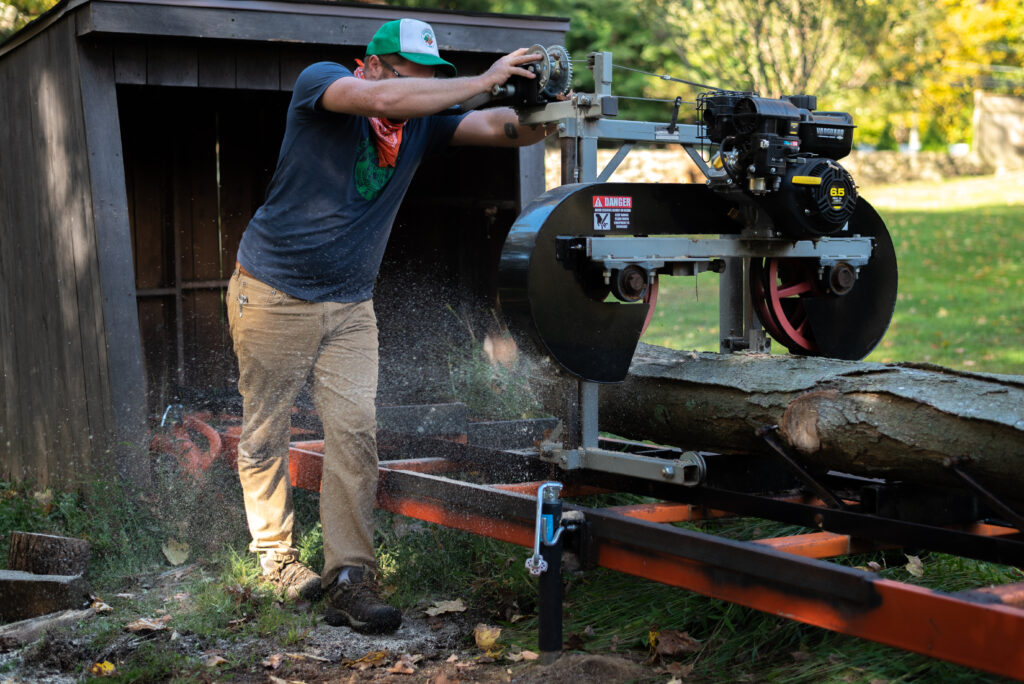
Under an agreement with the Connecticut Department of Energy and Environmental Protection, forest products can be labeled as CT Grown if the timber was grown, harvested, and the item was processed in CT. You can look for the CT Grown label for materials like fencing and flooring when undertaking your next home improvement project, or find unique gifts like furniture, cutting boards, and carved bowls.
Tobacco and spirits
For some folks, the best way to make a winter evening more enjoyable is to relax with a fine cigar and a glass of whiskey — both of which can be found locally.
Tobacco has been under cultivation in Connecticut since pre-colonial times, and it was once a major cash crop of the Connecticut River Valley. While the industry is much smaller than it used to be, about 2,000 acres are still dedicated to growing and curing shade tobacco. This tobacco is then destined for the outer layers of premium cigars, which can be found at local suppliers.
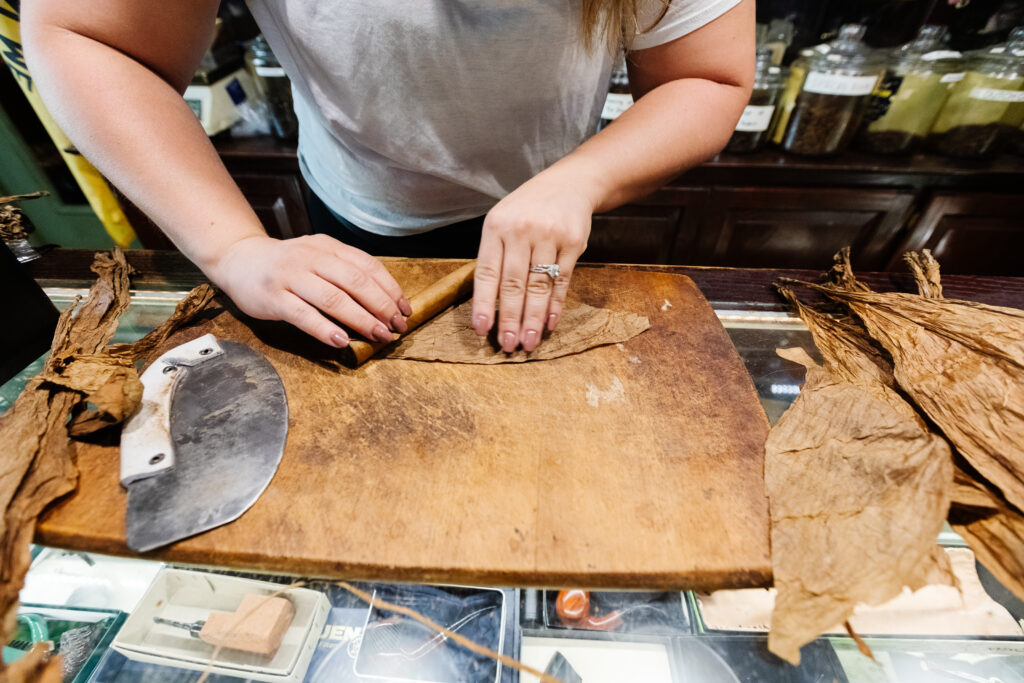
Two types of tobacco grow in Connecticut, and each variety is valued for its rich flavor profile. Connecticut shade tobacco offers a light, sweet smoke with notes like coffee, vanilla, and cream. The dark, thick leaves of broadleaf tobacco deliver bolder flavors like earthy minerals, spice, or chocolate.
Spirits have been on the rise in Connecticut in recent years, with a growing number of distillers taking on the meticulous task of producing bourbons, whiskeys, liqueurs, and more. As an added bonus, these distilleries often use local CT Grown products like apples and maple syrup to give their product a distinct flavor.
Bee products
Winter brings chapped lips and cracked skin. Fight back against the season’s dry air with the same ally that helps CT Grown farmers during the growing season: bees!
While honey is the most common bee product produced by Connecticut apiaries, many also offer personal care products made from beeswax. This material, used to construct honeycombs and seal in honey, also offers a natural way for the skin to retain moisture.
For this reason, beeswax finds its way into a variety of personal care products. Look for the material in lip balms, body scrubs, moisturizers, and more.
January 4, 2023 @ 9:00 AM – 1:00 PM
Join us at our annual event for an educational day of learning and updates on the latest trends in vegetable and small fruit production. There will be trade show held throughout conference. Up to 4 pesticide credits will be available; pending approval. Registration will increase to $70 after December 29.
Related Events
December 1, 2022 @ 8:30 AM – 3:30 PM
The Produce Safety Alliance (PSA) Grower Training Course has been designed to provide a foundation of Good Agricultural Practices knowledge that includes emphasis on co-management of food safety and environmental management goals, while outlining the requirements of the Food Safety Modernization Act (FSMA) Produce Safety Rule. The PSA Grower Training Course is one way to satisfy the FSMA Produce Safety Rule requirement outlined in § 112.22(c) that requires ‘At least one supervisor or responsible party for your farm must have successfully completed food safety training at least equivalent to that received under standardized curriculum recognized as adequate by the Food and Drug Administration.’
Snow date is December 2.
